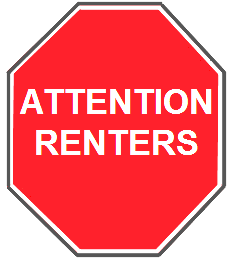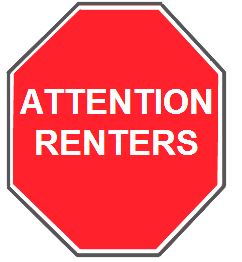Over the past few years, there has been a major increase in renters in condos and HOAs, in part due to the surge of Real Estate Investment Trusts (REITS) and other investors buying in community associations.
 Although, many associations have a process for collecting information on leased units, it is not uncommon that the records may be incomplete or inaccurate for a variety of reasons.
Although, many associations have a process for collecting information on leased units, it is not uncommon that the records may be incomplete or inaccurate for a variety of reasons.
If the Board believes it is important to have this information and control in the process, than it may make sense to restart the whole process from scratch and make sure that it is done right moving forward.
Some key points to consider:
1. Has your community clearly defined what your goals are for doing this – what you hope to achieve? Typical drivers are:
- Safety, Awareness and Involvement – if you don’t know who your renters are, you have no way to contact them to let them know about: potential issues, projects going on, events, etc.
- Security and Risk Management – if you have the right to approve renters, this could help prevent legally undesirable residents from moving in. If possible, you may also want to require a security deposit, if renters will have access to common area amenities.
- Control/Access – if you maintain an inventory of every owner and every owner car, it could help with denying access to common areas for non-payers, and also allow denying access to the community when a lease is up. If there are issues with cars: speeding, parking, etc., then this process might ultimately help identify the appropriate owner of the vehicle.
2. Do your documents give the board the authority to charge an application fee, screen and approve or disapprove rental applications? If not, work with your attorney on a rental amendment to your documents, or you may not have any right to do anything. Make sure your understanding is clear between a renter and a guest. For example, residents may claim to be a cousin, visiting for the season.
3. Do you have rules that allow you to fine owners that allow rentals without approval? This can only be done once you have approval rights in your documents, a policy should be crafted in conjunction with your attorney so that it's enforceable, or you won’t have much power to cause owners to comply.
4. Do you have a gate that you can use to help restrict access - require residents to prove identity and register their cars?
- Does your gate provide you the ability to restrict individuals? “turn off” a single clicker or deactivate a specific bar-code?
- If you have a gate that does allow you to restrict individuals, you could require all residents to register all of their vehicles and confirm or replace their access control (clicker or bar-code) by a certain date – typically one to three months, with accommodations for those that might be snowbirds. As part of the identity process, you will likely identify some unapproved renters.
5. Even if you don’t have a gate, but if you have rights to approve AND rights to fine, then here are some ways forward:
- Send a letter to whole community advising residents that you will be enforcing the new/existing rental policy and that if they are renting their unit they have 30 days to comply with a clearly outlined procedure of how to proceed. If they don't comply after the initial letter the association will be taking further action. You will get a lot of people to comply this way.
- The next step is to determine which homes you “believe” have renters and have not already complied and send them a “friendly certified letter” telling them it is your understanding that they have an unapproved renter and that they should complete the lease approval process within 15 days, or they will be subject to a fine of $100 per day – you MUST review this step/approach with your attorney to make sure that you are doing this legally. Why certified? You may not have any other address other than the home – if you send a certified letter, you are more likely to get the renter to pass the letter on to the owner.
- You may upset some people by falsely accusing them of having an illegal lease, so that is why it is important that you clearly understand point 1 above – why you are doing this. Make sure to include this information in the letter – so owners will understand the goal of the Board of Directors in gathering all this information on renters.
- It is best to include phone calls in this process as well – directly to the owner, particularly if you do not have an alternate address. Make sure everyone understands that this is being done for the safety of the community.
There is no simple and easy way to do this, but it can be fairly straight forward once you get it under control.
Has you board been through this process? What did you learn? What advice would you give other communities?
